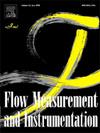Hydraulic valve design methodology for hydro turbine control system
IF 2.3
3区 工程技术
Q2 ENGINEERING, MECHANICAL
引用次数: 0
Abstract
The control of the turbine and its equipment in a hydroelectric power plant requires the HPU (hydraulic power unit) to deliver large volumes of working fluid in a short time at specific optimum control parameters. The use of typical proportional flow control valves created by manufacturers of hydraulic components in low-pressure control systems is disadvantageous due to high pressure losses in the control chambers. This paper presents the methodology and test results while designing a hydraulic proportional valve for low pressure and high flow rate operation. CFD (computational fluid dynamics) theory was analyzed and characteristic values were determined. The validation of CFD tests through those on the test bench was carried out, correction factor was determined. A new proprietary solution was developed and a series of simulation studies were carried out to determine the flow characteristics depending on the degree of the opening of the proportional flow control valve.
水轮机控制系统液压阀设计方法
水力发电厂水轮机及其设备的控制要求 HPU(液压动力单元)在特定的最佳控制参数下,在短时间内输送大量工作流体。在低压控制系统中使用由液压元件制造商制造的典型比例流量控制阀非常不利,因为控制室中的压力损失很高。本文介绍了设计低压大流量液压比例阀的方法和测试结果。对 CFD(计算流体动力学)理论进行了分析,并确定了特征值。通过试验台测试对 CFD 测试进行了验证,并确定了校正系数。开发了一种新的专有解决方案,并进行了一系列模拟研究,以确定取决于比例流量控制阀开启程度的流量特性。
本文章由计算机程序翻译,如有差异,请以英文原文为准。
求助全文
约1分钟内获得全文
求助全文
来源期刊

Flow Measurement and Instrumentation
工程技术-工程:机械
CiteScore
4.30
自引率
13.60%
发文量
123
审稿时长
6 months
期刊介绍:
Flow Measurement and Instrumentation is dedicated to disseminating the latest research results on all aspects of flow measurement, in both closed conduits and open channels. The design of flow measurement systems involves a wide variety of multidisciplinary activities including modelling the flow sensor, the fluid flow and the sensor/fluid interactions through the use of computation techniques; the development of advanced transducer systems and their associated signal processing and the laboratory and field assessment of the overall system under ideal and disturbed conditions.
FMI is the essential forum for critical information exchange, and contributions are particularly encouraged in the following areas of interest:
Modelling: the application of mathematical and computational modelling to the interaction of fluid dynamics with flowmeters, including flowmeter behaviour, improved flowmeter design and installation problems. Application of CAD/CAE techniques to flowmeter modelling are eligible.
Design and development: the detailed design of the flowmeter head and/or signal processing aspects of novel flowmeters. Emphasis is given to papers identifying new sensor configurations, multisensor flow measurement systems, non-intrusive flow metering techniques and the application of microelectronic techniques in smart or intelligent systems.
Calibration techniques: including descriptions of new or existing calibration facilities and techniques, calibration data from different flowmeter types, and calibration intercomparison data from different laboratories.
Installation effect data: dealing with the effects of non-ideal flow conditions on flowmeters. Papers combining a theoretical understanding of flowmeter behaviour with experimental work are particularly welcome.
 求助内容:
求助内容: 应助结果提醒方式:
应助结果提醒方式:


